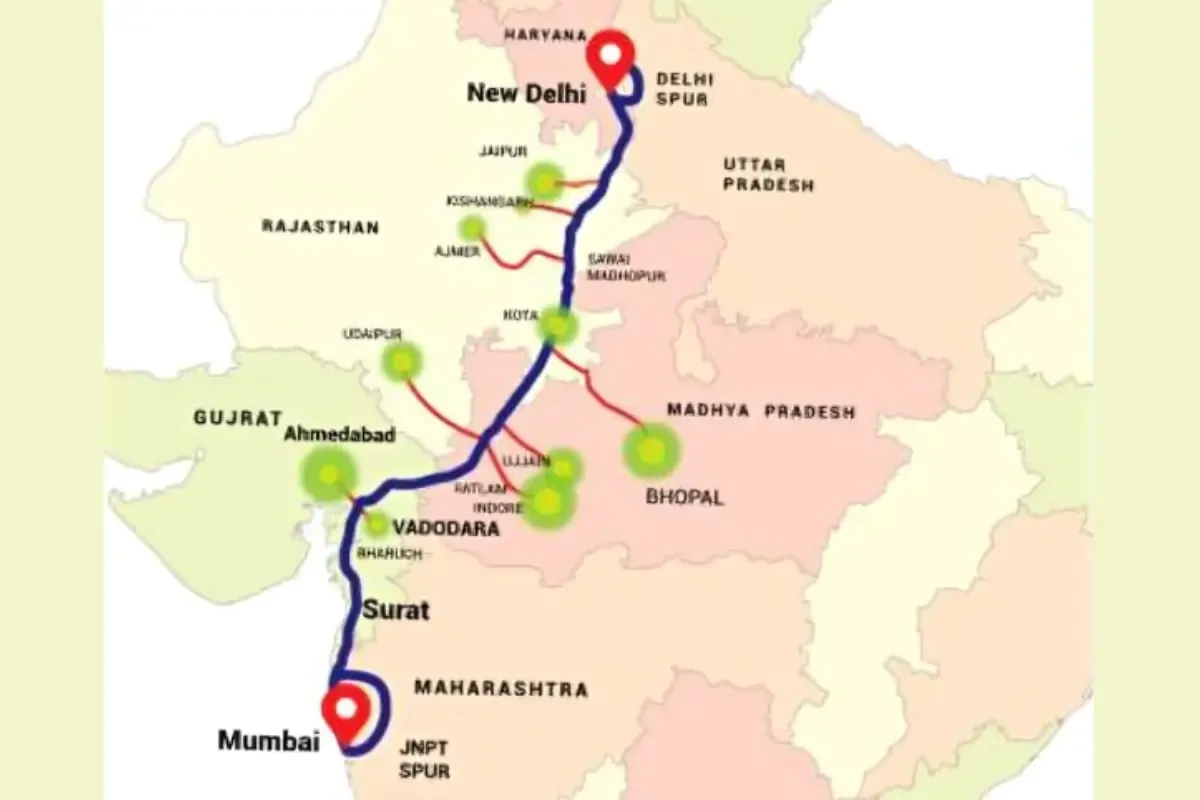India is stepping into a new era of road connectivity with the Delhi Mumbai expressway, a massive infrastructure project by the National Highways Authority of India (NHAI). Stretching across 1,386 kilometres, this expressway is set to become the longest in the country and will connect 6 states—Delhi, Haryana, Rajasthan, Madhya Pradesh, Gujarat, and Maharashtra.
The high-speed expressway aims to cut travel time from nearly 24 hours to just 12 hours, making road trips between two of India\’s biggest cities much faster and smoother.
What is the current status of the Delhi Mumbai expressway?
As per the Ministry of Road Transport and Highways, over 82% of the work has been completed. In a written reply to the Rajya Sabha, Union Minister Nitin Gadkari stated that 1,156 km of the expressway is ready, and 756 km is already operational.
Though the initial deadline was the end of 2025, some delays have been reported. These are mainly due to land acquisition issues and slow progress by contractors in certain stretches. Despite the setbacks, the NHAI is pushing hard to meet the revised targets and finish the remaining work soon.
What Is the Top Speed on Delhi Mumbai expressway?
The Delhi Mumbai expressway has been designed to allow vehicles to run at a top speed of 120 km/hr, making it one of the fastest highways in India. It is an eight-lane access-controlled expressway, with provisions to expand to 12 lanes in the future, depending on traffic volume.
This means faster, safer, and more efficient travel. The estimated cost of the project is ₹1,00,000 crore, marking it as one of India’s most ambitious and expensive road projects.
Which cities will benefit the most from the Delhi Mumbai expressway?
The Delhi Mumbai expressway passes through and connects a number of important cities including Delhi, Gurgaon, Faridabad, Ballabgarh, Sohna, Alwar, Bandikui, Dausa, Sawai Madhopur, Kota, Garoth, Mandsaur, Jaora, Ratlam, Thandla, Dahod, Godhra, Vadodara, Bharuch, Surat, Navsari, Valsad, Vapi, Virar, and Mumbai.

These areas are likely to experience a surge in economic activity, real estate growth, and job creation. The expressway will also ease logistics for industries, making it easier for e-commerce, manufacturing, and agriculture sectors to flourish.
How will Mumbai Delhi expressway support logistics, trade and small towns?
With faster travel times and reduced fuel costs, logistics companies and e-commerce giants will find the Delhi Mumbai route more efficient. This could lead to more warehouses, supply chains, and fulfilment centres coming up in smaller towns along the expressway.
This development will bring new business opportunities and could boost local employment, especially in Tier-2 and Tier-3 cities.
What modern facilities will be available on Delhi Mumbai expressway?
To ensure traveller comfort, the Delhi Mumbai expressway will feature modern amenities at regular intervals. These include:
- Fuel stations
- Restaurants and food courts
- Hotels and rest stops
- Emergency medical services
Every 300 km stretch will have access to these facilities, making long drives more convenient.
Additionally, the expressway will include intelligent traffic management systems, CCTV surveillance, and emergency response setups. The future-ready design also includes dedicated lanes for electric vehicles and charging stations, promoting eco-friendly travel.

